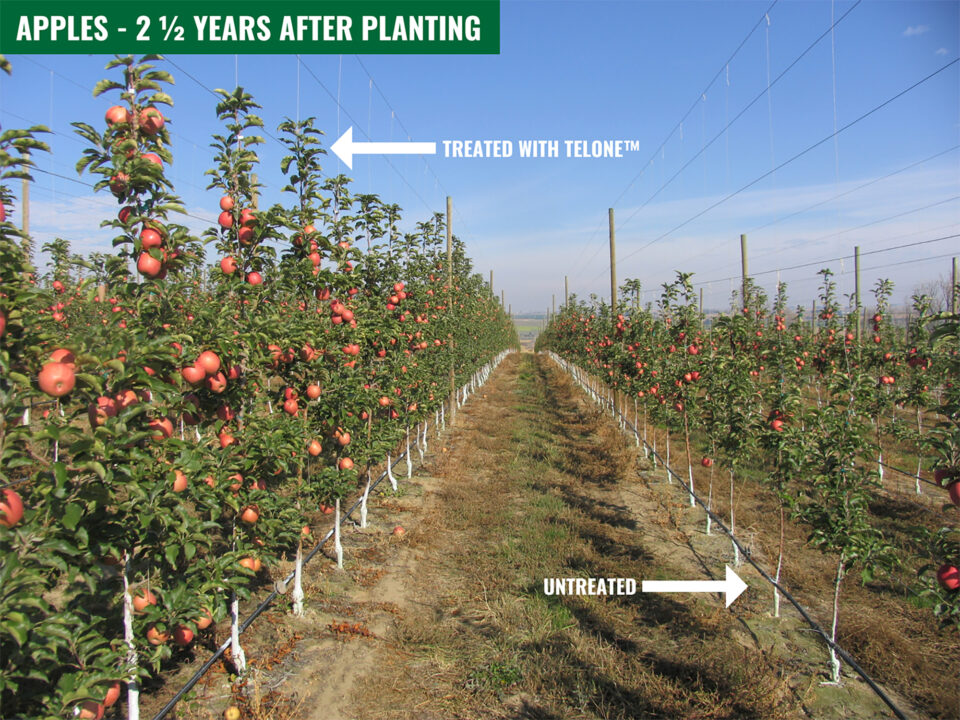Experimental Citrus Groves Disappearing in Florida

Seen from high above, the A.H. Whitmore Farm near Leesburg, FL, could serve as a prime location to host new citrus trials and demonstrations.
Image courtesy of Google Earth
This past fall, Florida’s citrus industry learned that it would lose the Mid-Florida Citrus Foundation’s A.H. Krezdorn Foundation Grove in West Orange County. Road projects criss-crossing the rolling sand hills, encroaching development, and loss of funding simply made it impossible for the Foundation to continue operations. The passing of longtime Manager and Farm Godfather Mickey Page in October surely clarified for the Foundation Board what needed to be done.
It was only eight short years ago that an Orlando Sentinel article carried the title “Research Groves Produce Citrus of the Future.” The A.H. Krezdorn Foundation Farm supported scion and rootstock development, entomology experiments, innovative projects with irrigation and freeze protection, and so much more. The farm was easily accessible from the Turnpike and hosted annual farm tours and research reviews. The closure of the farm is happening at a time when nurseries and growers are desperate for answers about new crop protection products, rootstock/scion combination performance, evaluation of experimental selections, data collection, etc. It certainly raises the question of where such work will be done in the future and whether locations for similar activities are going to be needed in each of Florida’s unique growing areas.
Where To?
The University of Florida’s Research and Education Centers (REC’s) in Balm, Lake Alfred, Immokalee, Ft. Pierce, Apopka and Mariana/Quincy certainly have a lot to offer with staff expertise, land, and facilities. However, funding would have to be identified to cover land charge-back costs and staffing committed to caretaking and data collection.
Private trial sites have long been an essential component of field trials and research, but they are often inaccessible to the industry and often are not suitable as demonstration sites.
New Varieties Development & Management Corp. (NVDMC) maintained a trial and demonstration site at the A. H. Krezdorn Foundation Farm. This small block contained plantings of 19 varieties and was slated for many more over the next few years. The true value of the Orange County site, besides its accessibility, was its suitability as both a trial and demonstration site. New varieties could be planted on several rootstock combinations and observed for growth characteristics, susceptibility to a range of pest and disease, productivity, and fruit quality. Perhaps most important, stakeholders could visit these plantings and begin to make their own determinations. In these challenging times, even anecdotal observations are valued.
Sites For Sore Eyes
The NVDMC Board is currently exploring options for the establishment of a new trial and demonstration site for fresh and processed selections. One possibility is the A. H. Whitmore Farm between Groveland and Leesburg.

The A.H. Whitmore Farm is already supporting research into citrus scion and rootstock development.
Photo by Peter Chaires
This farm is supported by the Florida Citrus Research Foundation (FCRF) and has USDA-ARS farm management staff and technicians on property. It is a secure site and is well managed and maintained. The farm supports a wide range of citrus plant improvement work, including scion and rootstock development and testing. Two screen structures were recently erected to support scion evaluation, maintain clean material, and accelerate new selections through juvenility. Seed trees of some of the most important commercial rootstock varieties are maintained on the farm, and this seed is made available to nurseries annually.
Though it is somewhat farther north than the primary growing areas and its soils may differ significantly from those in the River and Flatwoods, it is easily accessible from the Turnpike and has a lot to offer. The Whitmore Farm, with advanced notice, also could serve as a demonstration site for field days and grower visits. Greater awareness of the farm’s value and capabilities could only enhance its effectiveness and perhaps ensure that the farm remains a viable and useful tool to address industry challenges and issues into the future. The FCRF Board operates the farm in support of USDA-ARS research and the board would have to determine whether a variety evaluation and demonstration block (containing trees from a range of sources, states, and countries) fit within the scope and purpose of its operation.
Industry will need to determine whether independent diverse and accessible research and trials sites, like the A.H. Krezdorn Foundation Farm, are still needed. If so, how can they be funded and maintained in times of declining volume and escalating production costs? It seems the need has never been greater, and the funds have never been tighter. Hopefully, enhancing awareness through dialogue and trade press will engage the right people at the right time.










